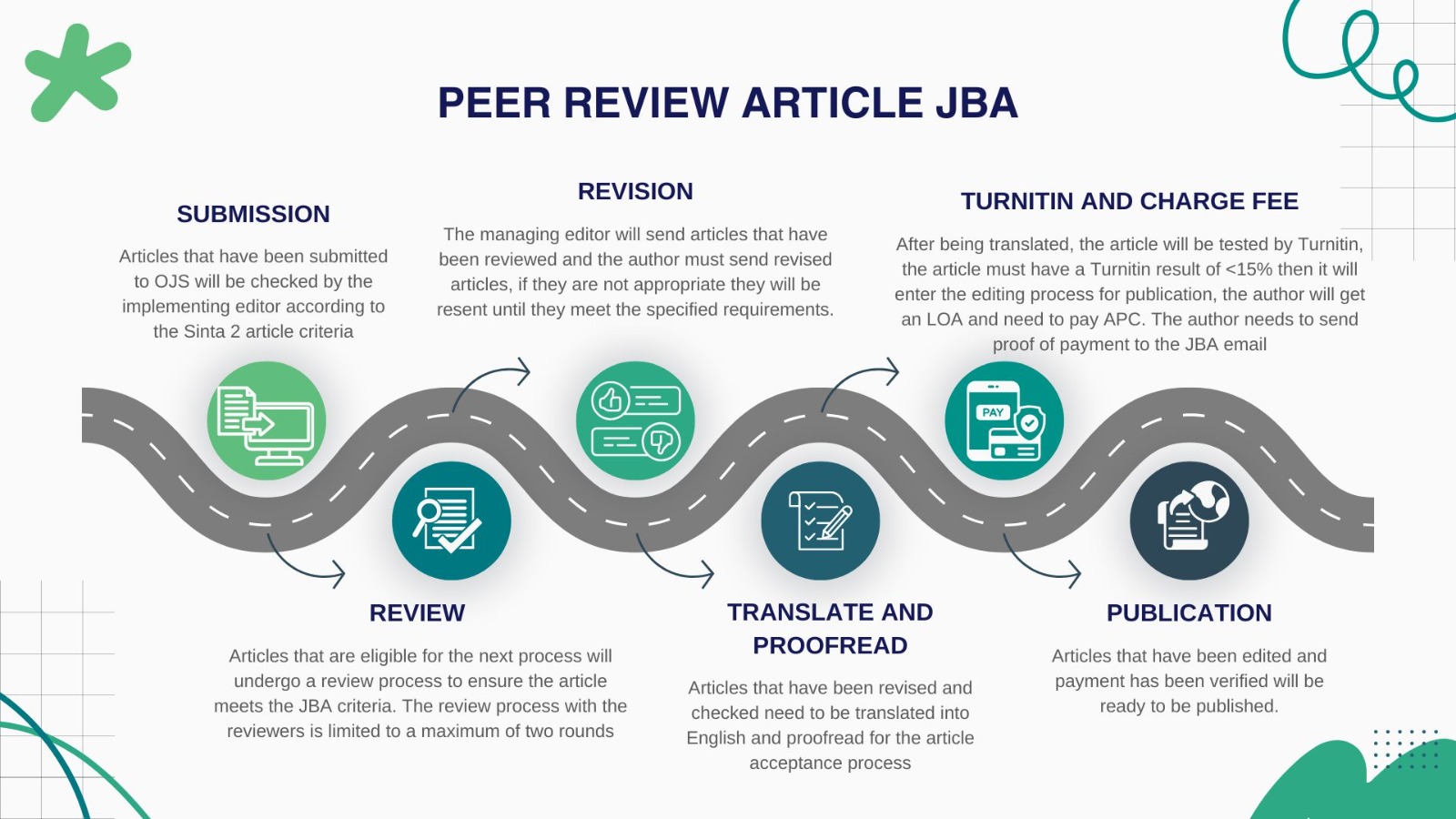Peer Review Process
Peer Review Process
All manuscripts submitted to this journal must follow focus and scope, and author guidelines of this journal. The submitted manuscripts must address scientific merit or novelty appropriate to the focus and scope. The manuscripts can be written in Indonesian but the manuscripts should be translated and proofread before published. All manuscripts have to be proofread before published.
All manuscripts must be free from plagiarism contents. All authors are suggested to use plagiarism detection softaware to do the similarity checking. Editors check the plagiarism detection of articles in this journal by using a Turnitin.
Every article in Jurnal Bisnis dan Akuntansi or Journal of Business and Accounting (JBA) that goes to the editorial staff will be selected through Initial Review processes by Editorial Board. Then, the articles will be sent to the peer reviewer and will go to the next selection by Double Blind Preview Process. After that, the articles will be returned to the authors to revise. These processes take a year for a maximum time. In the each manuscript, peer reviewer will be rated from the substantial and technical aspects. Peer reviewer that collaboration with JBA is the experts in the Business or Accounting area and issues around it. They were experienced in the prestigious journal management and publication that was spread around the national and abroad.
All submitted manuscripts are read by editorial staff. Those Manuscript evaluated by editors to be inappropiate to journal criteria are rejected promptly without external review. Manuscript evaluated to be of potential interest to our readership are sent to double blind reviewers. The editors then make a decision based on the reviewer's recommendation from among several possibilities : rejected, revision required, or accepted.
The editor has the right to decide which manuscripts submitted to the journal should be published.
Review Process :
- Author submit the manuscript
- Editor Evaluation (some manuscript are rejected or returned before the review process)
- Blind peer review process
- Editor Decision
- Turnitin and proofreading
- APC payment
- Confirmation to the author
Screening Plagiarism Policy
By submitting your manuscript to the journal it is understood that this is an original manuscript and is unpublished work and is not under consideration elsewhere. Plagiarism, including duplicate publication of the author’s own work, in whole or in part without proper citation is not tolerated by the journal.
In order to ensure the quality and avoid similarity of the content, please check the article by submitting it in the following Turnitin Apps. We will only tolerate a similarity of the manuscript by 15% to be published in our journal.
Plagiarism is the exposing of another person’s thoughts or words as though they were your own, without permission, credit, or acknowledgment, or because of failing to cite the sources properly. Plagiarism can take diverse forms, from literal copying to paraphrasing the work of another. In order to properly judge whether an author has plagiarized, we emphasize the following possible situations:
- An author can literally copy another author’s work- by copying word by word, in whole or in part, without permission, acknowledge or citing the original source. This practice can be identified by comparing the original source and the manuscript/work that is suspected of plagiarism.
- Substantial copying implies for an author to reproduce a substantial part of another author, without permission, acknowledgment, or not a citation. The substantial term can be understood both in terms of quality as quantity, being often used in the context of Intellectual property. Quality refers to the relative value of the copied text in proportion to the work as a whole.
- Paraphrasing involves taking ideas, words, or phrases from a source and crafting them into new sentences within the writing. This practice becomes unethical when the author does not properly cite or does not acknowledge the original work/author. This form of plagiarism is the more difficult form to be identified.












 ISSN Online (E-ISSN
ISSN Online (E-ISSN  .
.



